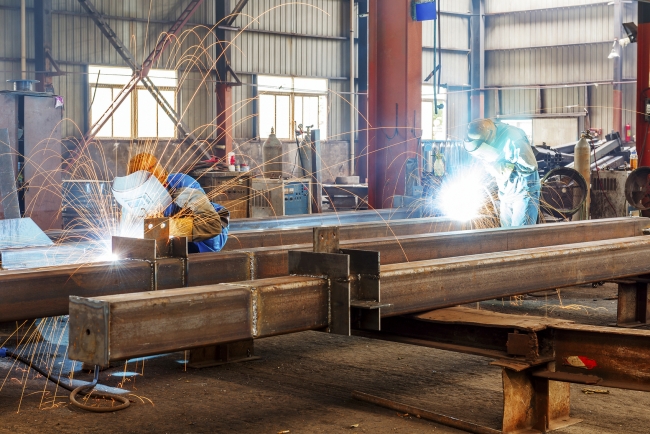3 minute read
Manufacturers report strong output growth
Production among UK manufacturers grew at the fastest pace since January 1995 in the three months to July, according to the latest quarterly CBI Industrial Trends Survey.
The survey of 397 manufacturers also found that employee headcount increased at the fastest rate for three years and that hiring intentions for the coming quarter also improved. Optimism rose marginally in the three months to July, while export optimism for the year ahead rose at a slower, but still healthy pace.
Growth in total orders moderated in line with expectations, but remained robust. Domestic orders expanded at a strong pace, similar to the rate in the previous quarter, and growth in export orders also remained brisk, despite slowing somewhat.

Yes more positivity with the latest CBI survey showing production among UK manufacturers grew at the fastest pace since January 1995 / Picture: Getty/iStock
Output growth is expected to continue to grow strongly in the quarter ahead and manufacturers are upbeat about prospects for overall demand. Domestic orders are expected to continue growing strongly, while expectations for growth in export orders improved to a four-decade high. Alongside robust expectations for demand, firms accumulated raw materials at the fastest pace since April 1977 and stocks of work-in-progress expanded at a record rate.
Against this backdrop, investment intentions improved across the board, particularly for training and retraining where planned growth in spending for the year ahead is the highest in over two years.
Meanwhile, input cost pressures cooled in the quarter to July and are expected to soften further in the near-term, while factory gate price inflation is also expected to be more subdued.
Rain Newton-Smith, CBI Chief Economist, said: “Output growth among UK manufacturers is the highest we’ve seen since the mid ‘90s, prompting the strongest hiring spree we’ve seen in the last three years. Cost pressures are easing and firms are upbeat about the outlook for export orders.
“It’s great to see the benefits from the decline in sterling for UK exporters feeding through. But the flipside is the broader hit to consumer spending power across the economy from stronger inflation, which is likely to have fuelled the slowdown in the economy in Q1 and is expected to pull down growth in Q2.”

CBI Chief Economist, Rain Newton-Smith / Picture: CBI
Key findings:
• 18% of firms said they were more optimistic about the general business situation than three months ago and 13% were less optimistic, giving a balance of +5%. Optimism about export prospects for the year ahead grew (+13%) at a solid pace
• 43% of firms said the volume of output over the past three months was up and 12% said it was down, giving a balance of +31%, the highest since January 1995 (+33%)
• 35% of businesses reported an increase in total orders, and 21% a decrease, giving a balance of +14%
• Domestic orders (+19%), expanded at a broadly similar pace to the previous quarter, with export orders growth remaining strong, despite slowing (+17%)
• 32% of manufacturers said employee numbers were up, and 13% said they were down, giving a rounded balance of +18% – the highest since July 2014 (+26%)
• Average unit costs grew at a more subdued pace (+20%). Growth in average domestic prices (+21%) and average export prices (+24%) was broadly unchanged
• Stock building of raw materials (+20%) was the strongest since April 1977 (+22%), whilst stocks of work-in-progress rose (+16%)
Key findings – looking ahead:
• Expectations for domestic order growth (+16%) are the most upbeat since April 2015 (+18%), whereas expected growth in export orders (+28%) is the highest in four decades (+37%)
• Expectations for output growth (+28%) are the highest since April 2014
• Unit costs growth (+5%) are expected to moderate further over the next quarter and domestic price inflation (+9%) is anticipated to be more subdued
• Investment in training and retraining in the year ahead is expected to increase at the strongest pace (+28%) since January 2015